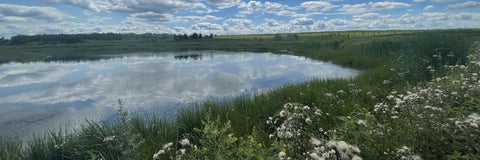
What's Happening in Earth and Environmental Sciences
Featured News
Celebrating a successful first CRC term
November, 4 2025
Following the success of his first term, Dr. Brian Kendall has had his Canada Research Chair (CRC) in Redox-Sensitive Metal Isotope Geochemistry (Tier 2) renewed for another five years.
Long-time staff member Marianne Vandergriendt named Honorary Member of the University
October 29, 2025
Marianne Vandergriendt, a long-time staff member in Science, was recognized for her service to the University of Waterloo at fall convocation. She was named an Honorary Member of the University, acknowledging her 43 years in the Earth and Environmental Sciences department.
Snapshots of change
August 13, 2025
Visitors to several national and provincial parks in British Columbia and Alberta can now help monitor critical glacial landscapes as part of a new citizen science program led by researchers at the University of Waterloo.
Honouring the distinguished career of Mario Coniglio
July 14, 2025
Mario Coniglio has retired before, but this time, it’s for real. Rather than transitioning into retirement as originally planned, he continued in the role of Chair for the Earth and Environmental Sciences department. He completed his term at the end of June, capping off a 39-year career marked most notably in its latter half by a passion for academic service in a variety of leadership roles.
Featured Events
2025 Birdsall-Dreiss Distinguished Lecture: M. Bayani Cardenas
Join us for the 2025 Birdsall-Dreiss Distinguished Lecture featuring
Dr. M. Bayani Cardenas
Earth and Planetary Sciences
University of Texas at Austin
Groundwater on ice: hydrogeologic processes and the fate of permafrost carbon in Arctic watersheds
Monday, October 27, 2025
10:30 a.m.
In-person: EIT 3142
2025 Farvolden Lecture
Dr. David Blowes
Earth and Environmental Sciences
University of Waterloo
Forecasting, mitigating and preventing the impacts of mining on groundwater quality
Monday, October 27, 2025
2:00 p.m.
In-person: Fed Hall
The Farvolden Lecture Series, hosted by the Department of Earth and Environmental Sciences, University of Waterloo, was initiated in 1996 as an annual celebration in honour of Dr. Robert N. Farvolden.